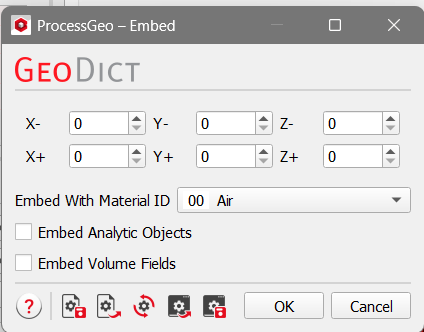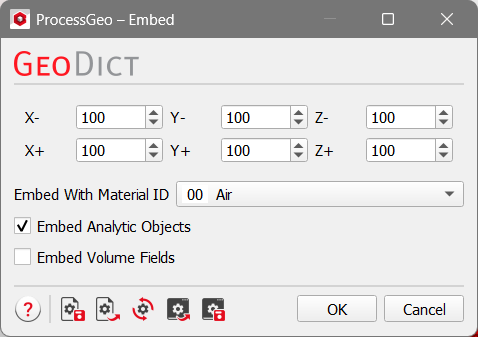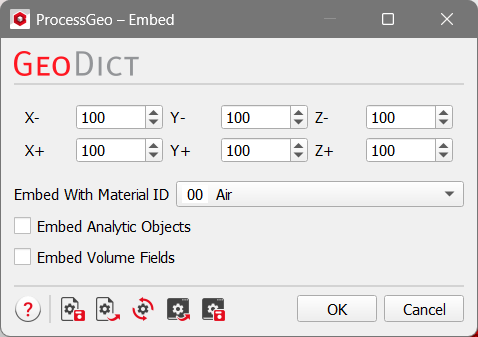Embed
With Embed, the domain is enlarged by the defined number of voxels in the directions X-, X+, Y-, Y+, Z- and/or Z+. The added voxels get the material ID selected under Embed with Material ID.

By checking Embed Volume Fields, any loaded volume fields are also embedded to the new geometry size during the embedding operation. The volume fields are always embedded with value 0.

As noted above, in the project status section, a green dot in front of GAD Objects indicates that analytic data is in use. The dot changes to red when the structure’s analytic information is lost and no GAD data is in memory. This is the case, with the default settings for Embed. But it is possible to keep the analytic information of the original structure by checking Embed Analytic Objects.
This is illustrated in the following example of a fibrous structure, where the fibers extend beyond the 100 x 100 x 100 domain. The analytic information of the fibers was saved in the file (see the green dot in front of GAD Objects in the status section). Observe the difference in embedding 100 voxels of Air (Material ID 00) in all directions (X+, X-, Y+, Y-, Z+, Z-) with and without Embed Analytic Objects used.
Here, Embed Analytic Objects is used while embedding the structure.

The analytical information of the fibers in the original GAD file is kept and the fibers can be observed penetrating the region of the embedded voxels.

Now, Embed Analytic Objects is unchecked.

The analytic information of the fibers that is beyond the domain is lost and the fibers are seen ending at the boundary of the newly embedded voxels.
